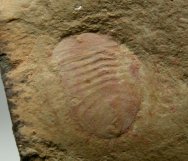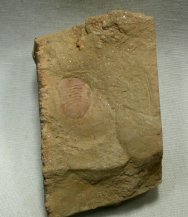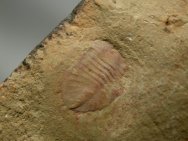Panlongia tetranudosa
Phylum Arthropoda, Family Helmetidae
Geological Time: Early Cambrian (~525 million years ago)
Size: 9 mm long
Fossil Site: Chengjiang Maotianshan Shale, Guanshan Fauna, Lower most part of Wulongqing Formation, Caijiachong Valley, Yieyatoung, Gangtoucun Village, Xiamacun Town, Kunming City, Yunnan
|
With
the discovery of the Chengjiang Biota in 1984 a window on the Cambrain
Explosion in China was opened. The diversity of soft-tissue fossils
is astonishing: algae, medusiforms, sponges, priapulids, annelid
like worms, echinoderms, arthropods (including trilobites), The taxon some resemblance to the younger Burgess Shale genus Hemetia, which has led some to place them in the Helmetidae along with several other similar arthropods, such as Kuamaia and Rhombicalvaria. The body shape suggests that these helmetids were benthic animals which were possibly carnivorous. There are two species described to date: Panlongia tertranodusa and Panlongia spinosa. The fauna has only been studied for some 6 years, so more unusual taxa are almost certainly awaiting discovery. Also see: Chengjiang Biota |
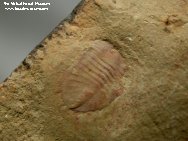
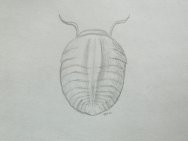 hemichordates,
chordates, and the first agnathan fish make up just a small fraction
of the total. Numerous problematic forms areknown as well, some
of which may have represented failed attempts at diversity that
did not persist to the present day.
hemichordates,
chordates, and the first agnathan fish make up just a small fraction
of the total. Numerous problematic forms areknown as well, some
of which may have represented failed attempts at diversity that
did not persist to the present day. 